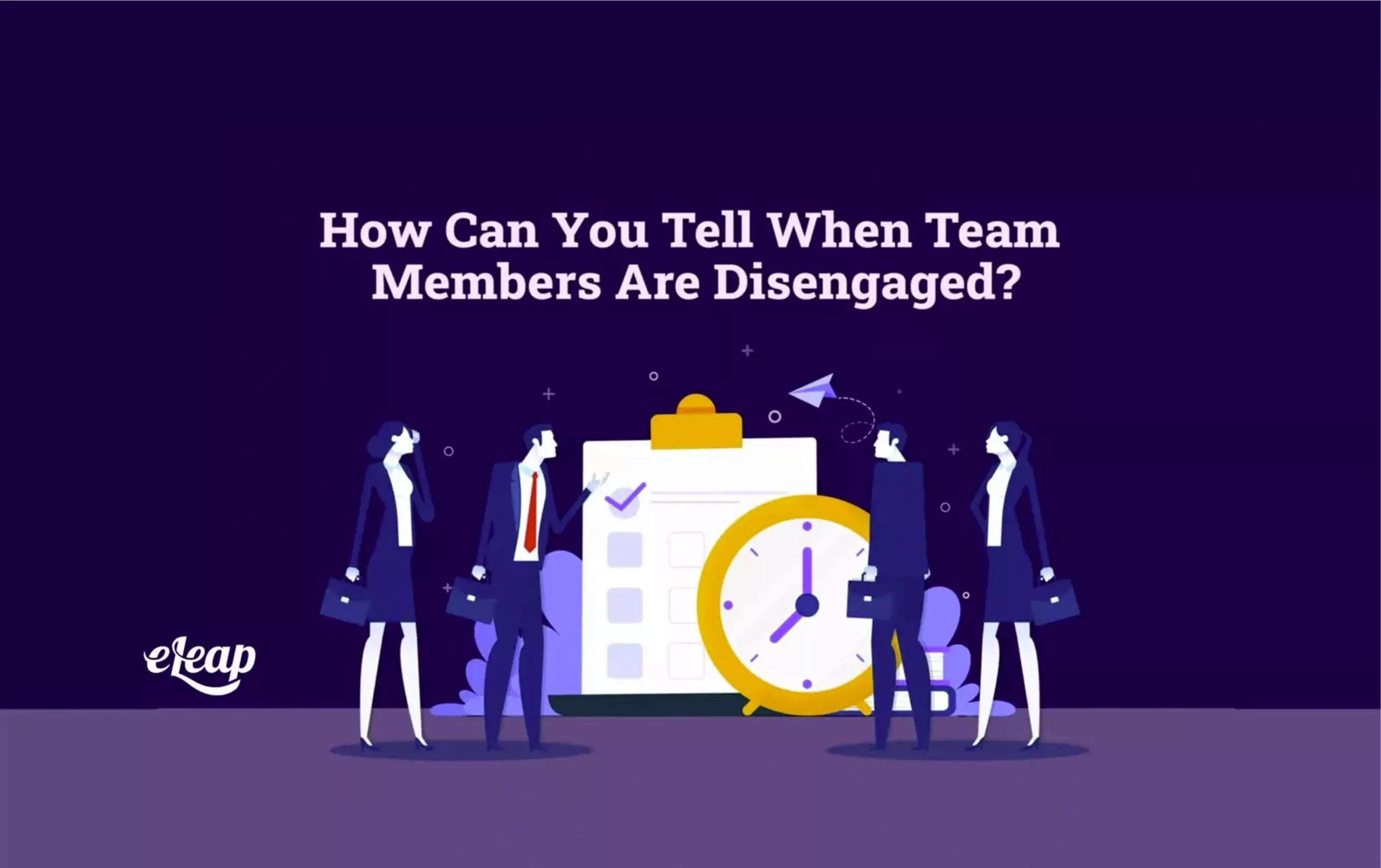How Can You Tell When Team Members Are Disengaged?

One of the most important elements of any corporate organization is the ability to keep team members engaged. People begin switching off at work for several reasons, and it’s up to management, often through the use of a performance management system, to rectify this situation.
Surveys suggest one of the main reasons for sudden disengagement is the belief that a negative work environment is becoming detrimental to an individual’s physical health and personal life. Because engagement is so closely associated with the overall well-being of your team members, it’s vital that you find ways to keep engagement rates high through positive avenues.
It’s difficult to expect your team members to notify you when they are feeling detached from their work. Self-awareness is void once someone reaches this point. Most individuals operate on autopilot – simply going through the motions until the workday ends.
It often requires help in identifying the issue and support from management and peers to correct it. However, the problem lies in the fact that disengagement comes in many forms, depending on the individual.
This is when performance management becomes vital. When combined with strong attention to behavior, the right PMS platform can alert you to signs that one of your team members has become detached or disengaged. In this article, we’ll touch on how to identify the signs of employees becoming disengaged and disenchanted with work. The eLeaP continuous performance management system provides organizations with powerful options to attract and retain high caliber team members.

1. Making Excuses
A disengaging employee will find any reason they cannot hold themselves accountable for their lack of performance. Sometimes this doesn’t come packed as a big elaborate story. It often comes in the form of “I am so sorry” or “Something came up and time ran short.”
It’s important to understand that sometimes these things aren’t excuses, and it becomes the manager’s job to discern between the two. Normally, you’ll find a pattern emerging when it comes to lack of performance. At a certain point, the odds of continuously experiencing adverse situations become impossible.
2. Constant Complaining
Let’s be clear on one thing before we elaborate more on this point. A valid complaint or issue regarding a team member and organization should always be welcome in any healthy workplace.
However, there is a difference between a valid complaint and frequent nit-picking about petty issues. This should raise red flags when nothing seems to ever be good enough for a team member.
A team member who has become disengaged will often find any reason to critique the organization they work for. This is often a mental coping defense mechanism that makes up for their lack of performance because of their disconnection.
Management should always approach a valid complaint quickly and efficiently. However, it’s your job as a leader to distinguish between the desire for a healthier workplace and someone that’s become disengaged.
3. No Initiative
When someone is enjoying their work, they will approach their role in a proactive way. They will look for new ways to stay busy when projects are finished and find new ways to solve problems as a team member.
Random issues that arise during the day are normally dispatched quickly and effectively by a content team member, allowing them to get back to important matters. However, a disengaged employee will use these roadblocks as a means to further drift away from work.
For example, if the network goes down and certain things are no longer accessible, most team members would immediately notify the tech department and rectify the issue. Someone that’s disengaged would use this as a reason to halt what they’re doing or go home for the day.
When an individual shows hardly any interest or initiative in attacking their role as a team member, it’s time for management to step in. In rare cases, individuals may just need to brush up on how to handle adverse situations at work.
However, these situations normally require a heart-to-heart meeting and understanding of the core problem. Sometimes, team members just need assistance in rediscovering their enjoyment of their position or inspiration within your organization.
4. Constant Distraction Issues
Often, individuals who are disengaged with their work will seem to be daydreaming. Their minds are constantly everywhere else besides focused on important tasks or projects throughout the day.
In certain cases, there may be important issues going on outside of work that are leading to these distractions. Stress on the home front or a serious family emergency could be causing these distractions or lack of concentration.
When it’s a situation of a disengaged employee, the problem is simply the desire to be anywhere but at work. It’s a manager’s job to figure out what’s causing the distractions and handle the situation accordingly.
If the distractions are a product of a negative situation outside of work, offer assistance in any way you can. Let the individual know you’re there for support, and the number one goal is helping them through whatever crisis they are facing.
However, if the issue is a product of disengagement, it’s important to understand what the individual needs to get back on track. Find a way to help them regain their focus and get them moving in the right direction again.
Team members becoming disengaged can happen in any department and employees of any caliber. Top and lower-level performers can experience these issues, and there isn’t a blanket solution for the problem.
Use your PMS as a tool to rectify these situations. Taking advantage of data and various metrics can allow you to identify team members’ success and praise them when the time is right. Use surveys as a means to gain insight into the opinions of team members and gauge their satisfaction with your organization.
Give them the opportunity to voice their opinions on things they feel can be improved. When you allow this type of transparency and encourage involvement, it promotes a sense of community that can help you avoid disengagement issues in the future. This is a vital element when it comes to corporate culture and can be a vital tool in hiring and retaining new talent and keeping veterans satisfied and thriving.